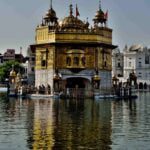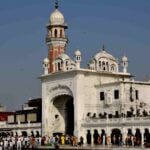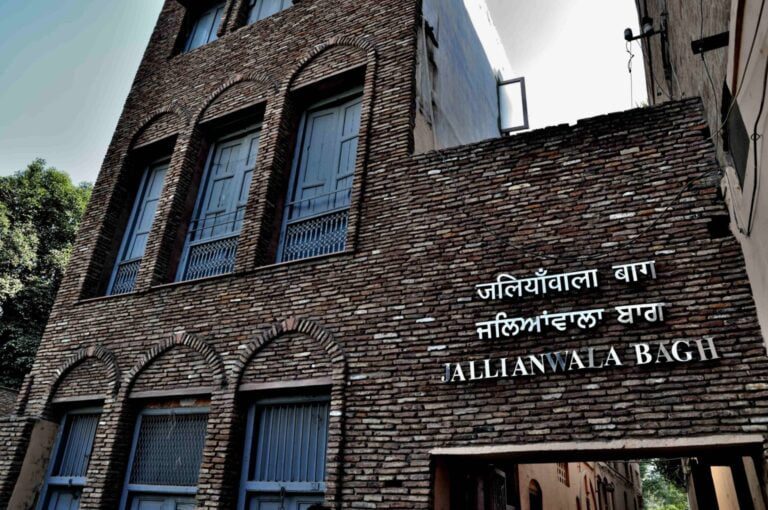The Golden Temple in India’s Amritsar Sri Harmandir Sahib Amritsar is built in a way that is unique to Sikhs. The Gurudwara is built lower than the land around it to teach the lessons of equality and humility. This holy shrine has four entrances on each of its four sides, demonstrating that people from all backgrounds are welcome there. “Sri Harimandir Sahib Amritsar,” the Golden Temple in Amritsar, India, is the most important place of worship for Sikhs.
Golden Temple Amritsar
Golden Temple is also a symbol of brotherhood and equality among people. No matter their caste, creed, or race, everyone can find spiritual comfort and religious fulfillment without any problems. It is also a symbol of the Sikhs’ uniqueness, glory, and history. Writing down Sri Harimandir Sahib’s philosophy, ideas, inner and outer beauty, and historical legacy is a huge task.
It is more about how it feels than how it looks. Sri Harmandir Sahib is the holiest Gurdwara in Sikhism. It is also called Sri Darbar Sahib and, informally, the Golden Temple. It is in the city of Amritsar, in the Indian state of Punjab. Guru Ram Das, the fourth Sikh guru, built Amritsar in 1577. The name means “the tank of nectar of immortality.” Guru Arjan, the fifth Sikh Guru, planned to build the Harmandir Sahib in the middle of this holy tank.
Once it was built, he put the Adi Granth, the most important book in Sikhism, inside the Harmandir Sahib. The Harmandir Sahib complex is home to the Akal Takht, which is also called the “throne of the timeless one.” Guru Hargobind, the sixth Guru, came up with the idea of the “throne of the timeless one.” People believe that God’s spiritual qualities live in the Harmandir Sahib. On the other hand, God’s power in the world is kept in the Akal Takht.
Guru Arjan invited the Muslim Sufi saint Hazrat Mian Mir to lay the foundation stone of the Harmandir Sahib as a way to show that Sikhism didn’t care about religion. The four entrances to the Harmandir Sahib represent the four ways to get inside. They also show that the Sikhs are open to all people and religions. Every day, more than 100,000 people come to pray at the holy shrine and eat together at the free community kitchen and meal, called Langar.
This is a tradition at all Sikh Gurdwaras. Jassa Singh Ahluwalia and a few other Sikh priests renovated the building that is now the gurdwara in 1764. At the beginning of the 1800s, Maharaja Ranjit Singh stopped people from outside the Punjab region from attacking it. He also used 750 kg of gold to cover the upper floors of the gurdwara. This gives it a unique look and its English name. The name “Harmandir Sahib” means “Temple of God” in English.
Akal Takht
Guru Amar Das told Guru Ram Das to make a nectar tank for the Sikhs to use as a place of worship. Guru Ram Das told all of his Sikhs to help with the work, which was being overseen by Bhai Buddha, and he hired workers to help them. He said that the tank of nectar should be God’s home and that anyone who bathed in it would get all kinds of spiritual and physical benefits.
During the building process, the Guru’s first home, a small hut, was turned into what is now called the Guru’s Mahal, or palace. Guru Ram Das dug a tank in 1578. It was called Amritsar, which means “Pool of the Nectar of Immortality.” The city that grew up around it was also named after it. In time, the Harmandir Sahib was built in the middle of this tank.
It is the most important place in Sikhism. Its sanctum became the place where the Adi Granth was kept. The Adi Granth is a collection of writings by Sikh Gurus and other saints, like Baba Farid and Kabir, who are thought to have shared Sikh values and ideas. Guru Arjan, the fifth guru of Sikhism, was the first person to start putting together the Adi Granth. Guru Arjan came up with the idea of giving the Sikhs a central place to worship and designed it.
Sri Harmandir Sahib
Guru Amar Das, the Third Sikh Guru, came up with the plan to dig up Amritsar or Amrit Sarovar, but it was Guru Ram Das who did it with Baba Budha’s help. The first Guru Sahib bought or got the land for the site for free from the Zamindars, or landowners, of nearby villages. A plan was also made to build a town, and building work on the Sarovar, the tank, and the town all began at the same time in 1570. In 1577, the work on both projects was done.
Guru Arjan started building the gurdwara in December 1588. On December 28, 1588, Hazrat Mian Mir put the first stone in place. In 1604, the gurdwara was done. In August 1604, Guru Arjan put the Guru Granth Sahib there and chose Baba Buddha to be the first Granthi, or reader. One of Ahmed Shah Abdali’s generals, Jahan Khan, led an Afghan attack on it in the middle of the 18th century.
This meant that a lot of work had to be done to rebuild it in the 1760s. Some of the Harmandir Sahib’s architectural features were meant to show how the Sikhs see the world. Instead of the usual way of building a gurdwara on high ground, it was built lower than the land around it, so that people would have to walk down steps to get inside.
Sri Harmandir Sahib also has four entrances instead of a single one. The gurdwara is surrounded by the Sarovar, a large lake or holy tank that is filled with Amrit, which is also called “holy water” or “immortal nectar.” The Ravi River feeds it. The fact that the gurdwara has four entrances shows how important it is to be open and accepting. There are three holy trees called “bers.” Each one represents a different event in history or a Sikh saint.
Inside the gurdwara, there are many plaques honoring Sikh historical events, saints, and martyrs, as well as all the Sikh soldiers who died fighting in World War I and World War II. A lot of the gilding and marble work you see today are from the early 1800s. Hukam Singh Chimni and Emperor Ranjit Singh, who was the Maharaja of the Sikh Empire of the Punjab, paid for all the gold and marble work.
Temple Amritsar
The Darshani Deorhi Arch is at the start of the path that leads to the Harmandir Sahib. It is 6.2 meters high and 6 meters wide. In 1830, Ranjit Singh began and finished adding gold to the Harmandir Sahib. Maharaja Ranjit Singh gave a lot of money and other things to help build the shrine. Guru Hargobind, the sixth Sikh Guru, also built the Akal Takht, which means “throne of the timeless one.”
It is a court that decides on temporal matters and gives justice. It is part of the Harmandir Sahib building. The Akal Takht and the holy shrine are opposites within the complex. The Harmandir Sahib is where God’s spiritual qualities are kept, while the Akal Takht is where God’s temporal power is kept. Vaisakhi, which is held in the second week of April, is one of the most important events (usually the 13th). Sikhs celebrate the start of the Khalsa on this day.
At the Harmandir Sahib, they do this with a lot of joy. Other important religious days for Sikhs are also marked with religious fervor, such as the birthday of Guru Nanak, the day Guru Teg Bahadur died as a martyr, and the day Guru Ram Das was born. Similarly, during Diwali, the Harmandir Sahib is beautifully lit up with diyas (lamps), and lights and fireworks are set off.
Most Sikhs visit Amritsar and the Harmandir Sahib at least once in their lives, usually for important events like birthdays, weddings, the birth of a child, etc. The Harmandir Sahib is open to everyone, as are all Sikh gurdwaras around the world. This is true no matter what religion, race, creed, or gender someone is. The only thing that stops people from going to the Harmandir Sahib is how they act when they get there and while they are there.






The Golden Temple Amritsar India (Sri Harimandir Sahib Amritsar) is not only a central religious place of the Sikhs, but also a symbol of human brotherhood and equality. Everybody, irrespective of cast, creed or race can seek spiritual solace and religious fulfilment without any hindrance. It also represents the distinct identity, glory and heritage of the Sikhs. To pen-down the philosophy, ideology, the inner and outer beauty, as well as the historical legacy of Sri Harimandir Sahib is a momentous task. It is a matter of experience rather than a of description.